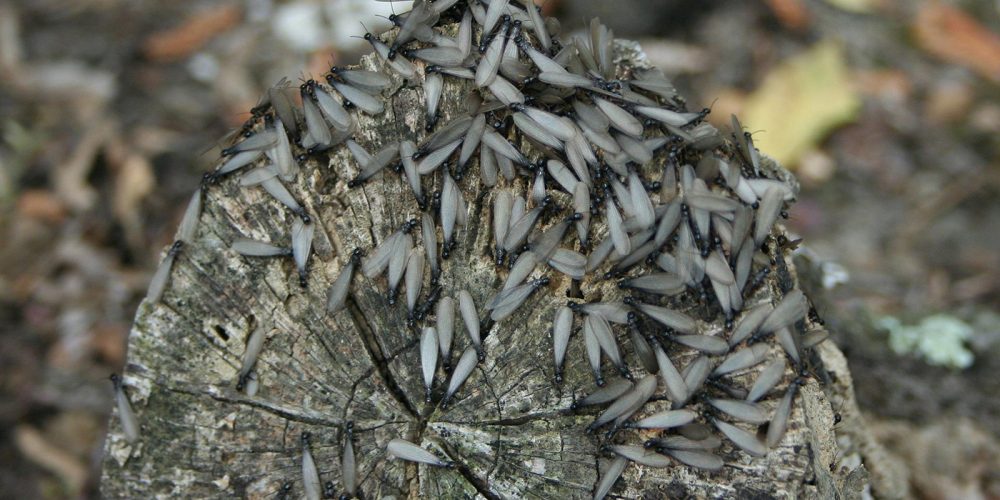Drywood termites live in wood, which is a popular building material, so you’ll often find them in wood baseboards, door frames, and attics. You can spot them by the damage they cause to the wood they use for food and moisture.
Although their colonies are relatively small — only a few hundred or thousand insects per colony — there may be many colonies spread throughout a home.
In this article, we’ll show you what to look for so that you can stop a drywood infestation in its tracks.
Signs of Drywood Termites
You can spot a drywood termite by its long, symmetrical wings and its color, which typically ranges from cream to black, However, because drywood termites hide in the wood, you may have trouble seeing signs of their activity. If you think you may have drywood termites, look for:
- Discarded wings around window sills.
- Pellets that are about 1-2 cm long and have six sides. They are usually found in piles and may look like sawdust or coffee grounds.
- Wood damage. Pay particular attention to the wood legs of your furniture, as well as baseboards.
You may find more evidence of termites when they swarm. Termites swarm in order to reproduce and create new colonies. Because of our warm, humid weather, drywood termites can swarm any time of year. Some drywood species may prefer the afternoon during the spring months, while others will swarm at night (also in the spring).
Swarming termites are attracted to light sources. Pay particular attention to your window sills and sliding glass doors during these times. Swarmers don’t eat wood or cause damage, but their colonies will. As soon as you see their wings or find dead swarmers near any light source, stay calm and call JD Smith.
Trust JD Smith to Rid Your Home of Termites
Getting rid of termites is important because of the damage they do. Florida is particularly susceptible, as we are in Termite Infestation Probability Zone #1 (TIP Zone 1). That means we live in an area where there are very heavy termite infestations.
There are a number of different treatments to getting rid of drywood termites. These can include spot treatments, heat, and fumigation. We understand the many types of treatment, so you can rely on us to find the approach that will work best for your situation.
We can also help you keep out drywood termites through our termite prevention program. But if you think you already have an issue, there are steps you can take during a swarm. Here are just a few:
- If applicable, close the door to the room where they are swarming
- Vacuum the swarmers and discard them in a sealed bag outside
- Save a small bag of dead termites and/or their discarded wings so you can show them to our inspectors.
If you think you might have drywood termites, contact JD Smith Pest Control for our free inspection. Our certified inspectors will assess your situation and create a pest control plan that’s right for you.



